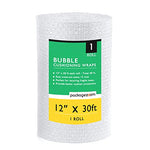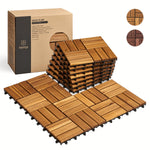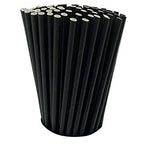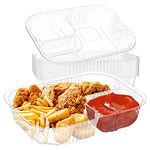You have no items in your shopping cart.
When it comes to shipping valuable goods, selecting the appropriate boxes is crucial to safeguarding your items throughout their journey. The right boxes for shipping can make all the difference in ensuring your goods arrive intact and undamaged. In this comprehensive guide, we will explore everything you need to know about selecting, packing, and shipping using the optimal boxes for your needs.
Table of Contents
-
Why the Right Boxes Matter
- The Impact of Box Selection on Shipping Safety
-
Choosing the Perfect Box
- Evaluating Size, Strength, and Material
-
Different Types of Boxes
- Exploring Cardboard, Corrugated, and Plastic Options
-
The Importance of Box Weight
- Striking the Right Balance for Safe Shipping
-
Essential Packing Materials
- Cushioning, Wrapping, and Securing Your Items
-
Proper Packing Techniques
- Ensuring Safety and Stability
-
Sealing and Labeling
- Securing Your Box for Transit
-
Shipping Fragile Items
- Extra Precautions for Delicate Goods
-
Shipping Heavy Items
- Strategies for Handling Weighty Packages
-
International Shipping Considerations
- Navigating Customs and Regulations
-
Choosing the Right Shipping Carrier
- Comparing Options for Safe Delivery
-
Tracking and Insurance
- Protecting Your Shipment from Start to Finish
-
FAQs
- Frequently Asked Questions about Boxes for Shipping
-
Conclusion
Why the Right Boxes Matter
Shipping goods involves a multitude of handling and transportation stages. The right boxes can significantly reduce the risk of damage during these processes. By choosing boxes specifically designed for shipping purposes, you ensure the safety of your items throughout their journey.
Choosing the Perfect Box
Selecting the perfect box for shipping is crucial for protecting your goods. Consider factors such as size, strength, and material to ensure the right fit for your items. A box that is too small may lead to squashed or damaged goods, while one that is too large can result in movement and breakage.
Different Types of Boxes
There are several types of boxes commonly used for shipping, including cardboard, corrugated, and plastic options. Cardboard boxes are cost-effective and versatile, while corrugated boxes offer enhanced strength and protection. Plastic boxes provide durability and are suitable for repeated use.
The Importance of Box Weight
When shipping goods, it's essential to strike the right balance with box weight. While you want to protect your items, excessively heavy boxes may incur higher shipping costs and pose safety risks. Opt for boxes that provide sufficient protection without exceeding weight limitations.
Essential Packing Materials
To secure your items during shipping, various packing materials come into play. These include cushioning materials like bubble wrap and packing peanuts, as well as wrapping materials such as foam sheets and shrink wrap. Ensure you have an adequate supply of these materials to safeguard your goods.
Proper Packing Techniques
Knowing how to pack your items properly is just as important as selecting the right boxes. Begin by placing a layer of cushioning material at the bottom of the box. Wrap delicate items individually, securing them tightly. Fill any remaining gaps with additional cushioning, ensuring minimal movement during transit.
Sealing and Labeling
Properly sealing and labeling your boxes is crucial for successful shipping. Use high-quality packing tape to securely close all openings. Affix labels clearly displaying the recipient's address and contact information, as well as your own return address.
Shipping Fragile Items
When shipping fragile items, extra precautions are necessary. Consider double boxing delicate items, using sturdy boxes and cushioning materials between the inner and outer boxes. Mark the package as "Fragile" to alert handlers to exercise caution.
Shipping Heavy Items
Shipping heavy items requires careful planning and consideration. Opt for boxes with high weight-bearing capacity, reinforced corners, and sturdy handles. Additionally, reinforce the bottom of the box with additional tape for added stability.
International Shipping Considerations
When shipping internationally, it's important to familiarize yourself with customs regulations and any specific packaging requirements. Certain items may be prohibited or require additional documentation. Research the destination country's rules to ensure a smooth shipping process.
Choosing the Right Shipping Carrier
Selecting the right shipping carrier is crucial for the safe delivery of your goods. Compare carriers based on factors such as reliability, handling practices, and insurance options. Consider both cost and service quality to make an informed decision.
Tracking and Insurance
To provide peace of mind throughout the shipping process, consider utilizing tracking services and insurance. Many carriers offer tracking options that allow you to monitor your shipment's progress. Additionally, insurance coverage ensures compensation in the event of loss or damage.
FAQs
Q: Can I reuse boxes for shipping?
A: Reusing boxes can be a cost-effective and environmentally friendly option. However, ensure that the box is still in good condition, with no significant damage or weakened structural integrity.
Q: Can I ship irregularly shaped items in boxes?
A: Yes, irregularly shaped items can be shipped in boxes. It's essential to select a box that accommodates the shape and size of the item while providing adequate protection and cushioning.
Q: How do I determine the right box size for my items?
A: Measure the dimensions of your items and select a box that allows for a few inches of extra space around all sides. This extra space will accommodate cushioning materials and help protect your items during transit.
Q: Are plastic boxes better than cardboard for shipping?
A: Plastic boxes offer durability and can be suitable for repeated use. However, cardboard boxes are generally more cost-effective and versatile, providing ample protection for most shipping needs.
Q: What should I do if my shipment arrives damaged?
A: In the unfortunate event that your shipment arrives damaged, document the damage with photographs and contact the shipping carrier immediately. Follow their instructions for filing a claim and seek compensation for the damaged items.
Q: Can I ship perishable items in regular boxes?
A: Perishable items require specialized packaging to maintain their freshness and integrity. It's recommended to use insulated boxes and cooling materials to ensure the safe transport of perishable goods.
Conclusion
Selecting the right boxes for shipping is essential to protect your valuable goods. By choosing the appropriate box size, material, and packing techniques, you can minimize the risk of damage during transit. Take the time to properly pack and secure your items, and select a reliable shipping carrier to ensure a smooth and safe delivery. With these guidelines in mind, you can confidently ship your goods to any destination.








